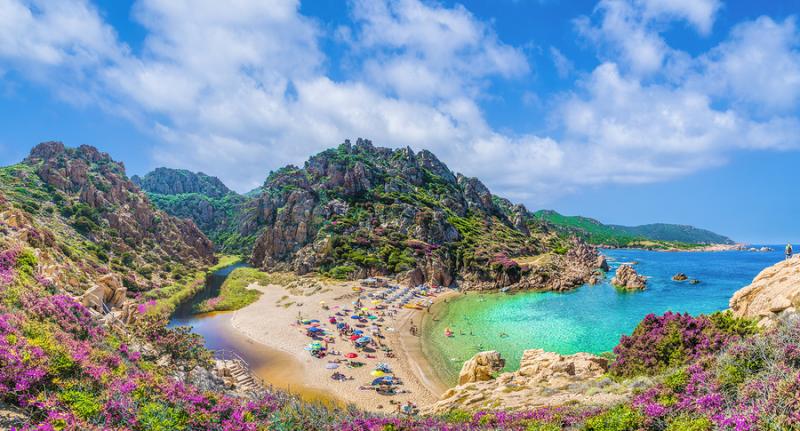On one side is Santa Teresa di Gallura, on the other are Castelsardo and Sassari. Between them, the Mediterranean, pine forests, dunes, and beaches. The mistral wind blows constantly, shaping the granite cliffs, shaking the juniper trees, sculpting this stretch of coast in northern Sardinia that have come to be known as Costa Paradiso (Paradise Coast). A heavenly stretch of coast indeed that is ideal to be explored through a trip on the road, where the beaches of Costa Smeralda, Porto Torres or Stintino are never far away.
Starting at Castelsardo, your first stop will be the village of Isola Rossa, founded at the beginning of the 20th century by Neapolitan and Gallura fishermen and farmers. The village takes its name from the amaranth-colored porphyry rocks abundant in the area, which are also found on the small island of the same name bordering the marina to the west. The village’s small population swells to thousands during the summer months. A 16th-century Spanish defense tower near town is a reminder of the former Spaniard domination.
From Isola Rossa, take a detour towards the interior to reach the Valle della Luna, a barren landscape dotted with granite rocks carved by natural erosion, forming bizarre and animal shapes. Valle della Luna is near the village of Aggius, also worthy of a detour.
Heading toward Capo Testa, make a stop at Rena Maiore beach, which overlooks Cala Vall'Alta. This spot was, according to the ancients, the gate to hell; if you happen here on a day when the mistral blows hard, and you hear the roar of the sea, you’ll understand why.
Proceed for another 10 km to Capo Testa, where you can still see the quarries exploited in Roman times, and later used by the Pisans to build the cathedral of their city. The landscape here is truly spectacular, with granite cliffs that plummet into the emerald sea.
At the end of the promontory is Cala Spinosa, framed by granite rocks, where a stop to bathe into its transparent waters is a must. The water is so transparent thanks to the currents of the Bocche and the heavy, non-dusty quartz and granite sand, which results in one of the best underwater visibility in the Mediterranean.



